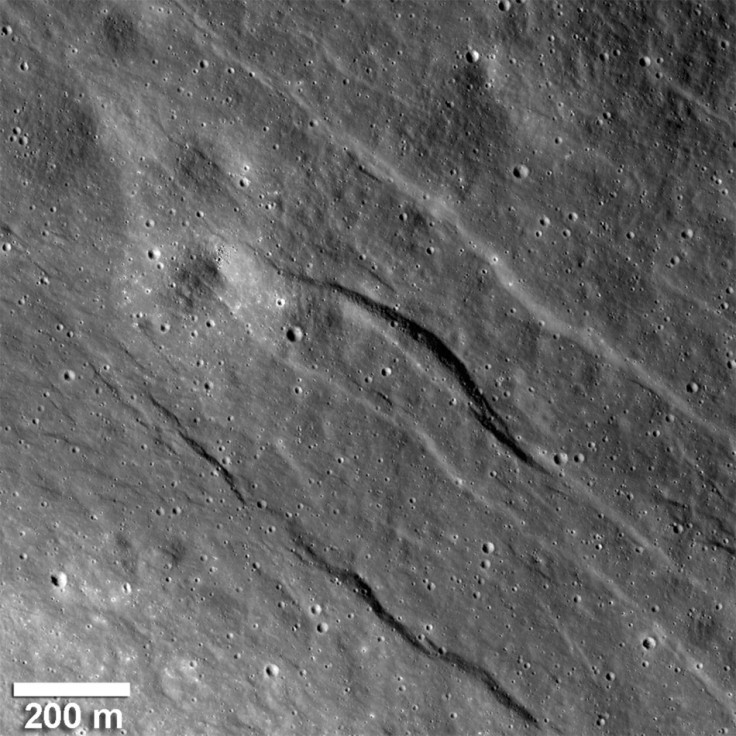Moon Crust Being Stretched, Finds Nasa

Astronomers from Nasa and the Smithsonian's National Air and Space Museum have discovered that the moon's crust is being stretched. They discovered it with the help of Nasa's Lunar Reconnaissance Orbiter (LRO) spacecraft
They found small, narrow trenches typically much longer than before. This indicates the lunar crust is being pulled apart at these locations. These linear valleys are also known as graben, formed when the moon's crust stretches, breaks and drops down along two bounding faults. A handful of these graben systems have been found across the lunar surface. These garbens show that the moon crust is being pulled.
According to the astronomers, unlike the terrestrial planets, the moon did not completely melt in the very early stages of its evolution. Rather, the moon's exterior initially melted forming an ocean of molten rock.
"We think the moon is in a general state of global contraction because of cooling of a still hot interior," said Thomas Watters of the Center for Earth and Planetary Studies at the Smithsonian's National Air and Space Museum in Washington.
In 2010, researchers had discovered physical signs of contraction on the lunar surface in the form of lobe-shaped cliffs known as lobate scarps. The scarps are evidence the moon shrank globally in the geologically recent past and might still be shrinking today. The team saw these scarps widely distributed across the moon and concluded it was shrinking as the interior slowly cooled. Now the discovery of garbens shows that the lunar crust is also being pulled apart.
"This pulling apart tells us the moon is still active," said Richard Vondrak, project Scientist at Nasa's Goddard Space Flight Center in Greenbelt, Md.
© Copyright IBTimes 2025. All rights reserved.





















